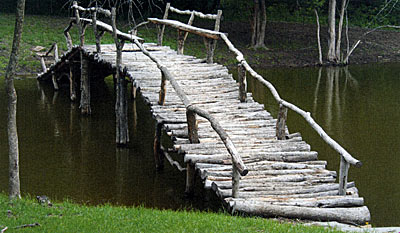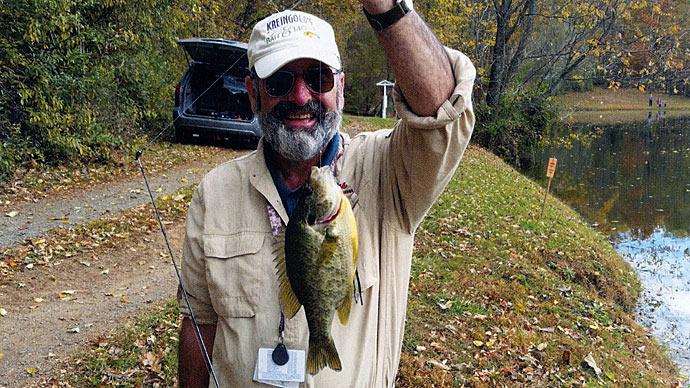
For decades, I've preached pond management is 10% science and 90% art. The science is basic, but effectively reading your pond—and then knowing what to do, based on those scientific principles—is art. But my mind is changing as our knowledge of ponds and new products and tools change. As our pond management industry starts to mature, we have more tools than we did way back when. We have better methods and equipment, too, such as aeration, microbes, refined fish food, better equipment, but most importantly, we have fast access to pieces of valuable information on that magic little hand-held device.
Notice I said, "pieces of valuable information."
So, maybe it's now 15% science and 85% art
The science is based on sound fundamental principles. The art is knowing how to drill down into the details of those principles to take the best actions to get your pond where you want it. The trick to the art is to understand how your choices will affect your pond, and whether the changes you make will result in what you want. That's the catch. If you understand your intent, choose the right products and tools, with sound decisions, and can predict results, you can make a successful choice.
Remember this: there is cause and effect with each choice you make, whether you are proactive or reactive. Reactive pond management happens because we're either complacent, don't make a decision, or make one that doesn't work as we'd hope.
A bigger catch is realizing there are lots of variables which influence the outcome of your scientific choices. One of the biggest mistakes people make is assuming results based solely on predictable variables. That's because some of the variables aren't necessarily predictable.
Okay, Lusk, explain what in the world you are talking about.
Fundamentals are clear. You have to have happy water. Happy, healthy water is the medium. Without that, nothing else matters. That's why you think so much about fresh water, good runoff, a well, aeration, and microbes. Sounds easy, but it's not. Water quality is one of those variables we have a hard time predicting. It changes with temperature, weather, and age. That's right—age. When water sits, it absorbs. Metals and minerals and nutrients dissolve. Other influences impact your water. That's why we do what we can to stabilize it with aeration and microbes. Next is habitat. Habitat, for whatever your biological expectations are, is the next important science-based principle. Without the best habitat for whatever you expect to grow, it won't grow as well. We prefer permanent habitat in the form of structure. But we also love cover, that stuff that comes and goes, especially favorable aquatic plants. In order, the next key principles are food chain, genetics, and harvest. Each of those is dynamic, changing as the pond grows and matures.
As your knowledge and experience grows, so will your pond's health—until something you don't know sideswipes you. Trust me, that will happen.

One of the keys to the art of pond management is understanding a pond is always changing. My nature is to assume that change is good, which is often the case.
But it's a good idea to presume a broader-based thought process. While thinking of good outcomes is fun and healthy, it's as wise to think 180 degrees the other way as well. For example, while water temperatures are as cold as they are right now, it's easy to assume your plants are dormant, fish are lulled into a state of partial hibernation, and your pond is at rest. Right now, I have a pond we stocked with 5,000 bluegills last spring, fed them, and expect to have some large fish going into this spring. When the temperature dropped, water turned sparkling clear, down to its deepest, six feet deep. I know those bluegills are schooled and hugging the bottom. I also know that dadgum water turkey that makes a stopover seemingly every day, is eating my crop. Sure, we spook him off, but we aren't around that pond all day every day. That bird is having a free meal at our expense. In a few weeks, we'll know the toll he's taken. That will impact my next line of thinking about what to do with the remaining fish.
In the south, it's common for pond managers to fertilize their ponds to promote a plankton bloom. Here's a classic example of the art of pond management. One avid Pond Boss reader was lamenting the fact that he's fertilized his seven-acre lake each spring exactly according to the label on the pond fertilizer bag, but he gets limited results. He struggles to get beyond three feet of visibility. He'd rather have two feet, with a nice green tint to the water by mid-April. With a good plankton bloom he's accomplishing two key concepts in basic pond management. First, with a plankton bloom of 18-24", he's built the base of the food chain, a key component to feed newly hatched fish, which is significant for his goals. Newly hatched baby fish have no energy stores and tiny mouths. They need to eat something small, preferably what they can glean from the water or graze off a substrate. Fertility is important for that. Secondly, a jump start on a plankton bloom in spring offers a head start to unwanted, invasive aquatic plant growth by blocking the sun off water deeper than the bloom's visibility. But, this pondmeister hasn't been able to get a textbook bloom. Why? Because of the other variables. Alkalinity must be near 40 parts per million or it doesn't matter how much fertilizer is added. Calcium carbonate in water is a building block for exoskeletal structures of plankton. Understanding that is a key to the art of pond management.
Understanding how water temperature affects plankton blooms is an art. Studying a plankton bloom and watching it change colors as it matures is an art. Knowing your pond and watching that young bloom turn a vivid green, and in a few days shift more toward a shade best described as olive, then an olive-brown, to brownish-olive is an art. Part of that art is understanding the science. As that bloom changes color, its composition is changing from plant to animal. Basically, microscopic animals are feeding on microscopic plants. As that develops, microscopic animals are feeding on slightly larger insects, which feed tiny fish. So, judging the color affects your decision about whether to fertilize again and keep that bloom going. That's part of the art, based on science.
To bring art to even bigger life, think about energy conversion. Each level of the trophic chain decreases ten-fold. To us, ten pounds of phytoplankton (microscopic algae and plants) grows a pound of zooplankton. Ten pounds of those microscopic animals grows one pound of tiny insects. Ten pounds of tiny insects grows a pound of bigger insects or tiny fish, and so on, up to your target species. If you do the math, it takes lots of energy to grow that ten-pound game fish we're shooting for. Our job, as pondmeisters, is to guide and mold our ecosystem in a timely, healthy way—heavy on the words timely and healthy. That's an art.
It's important to remember our pond management choices are cause and effect. Accurately project the effect and you're way more likely to make great choices.
Here's another real-world example. There's a Pond Boss subscriber and big fan that bought property on a rock quarry. The quarry water is gin clear and its fishery was bass-crowded. For most bass-crowded lakes, there are literally hundreds of dinky bass, mostly smaller than 14-inches with a few years under their skinny belts. This pondmeister spent a couple of years culling small bass and starting a feeding program. He uses a high-protein fish food targeting small bluegills. At the same time, he loves to attract fish to his dock by feeding. He noticed some larger fish coming to feed on his small bluegills. He started trapping bluegills and feeding them to his bigger bass. It worked. After a year and a half, he started seeing more fish coming around the dock and accepting his offerings. He sped up the process of fish growth using some creative techniques, and he spent lots of time thinking how he could grow those fish.
Another pondmeister was frustrated by the amount of filamentous algae growing in his central Texas pond's shallow water, which started showing up in January. For several years, he'd buy an algaecide and knock it out early, to get a head start. But, about three years ago, he noticed bluegills on beds for a short time during a spate of warm February days. When he treated the algae surrounding the beds, he soon noticed bass coming up and feeding on tiny fish. He presumed treating the algae took away hiding places and probably some food for his baby bluegills. The next year, he switched techniques. He left the algae alone, deciding it was habitat for newly hatched bluegills, and chose to wait and stock tilapia to eat the algae and convert it to flesh. For him, that was a good decision—part of the art of pond management.
How do you figure out how to use science- based thinking as you decide what to do with your pond? Learn the science and you'll figure out the art.
Another case in point. How much aquatic plant life is enough in your waters? When does it go from being prime habitat to a nuisance? You need to figure that out for your pond. Aquatic plants tie up nutrients that might otherwise be more useful in a plankton bloom. How do you know what to do? How do you know if your pond needs a nudge?
Learn as much as you can about the five most important scientific keys and you'll have a huge head start toward learning the art of pond management. By using a combination of today's products and tools, and learning how the different pieces of information you find come together like pieces of a natural jigsaw puzzle, you'll soon experience your way to the art of pond management.
Reprinted with permission from Pond Boss Magazine



